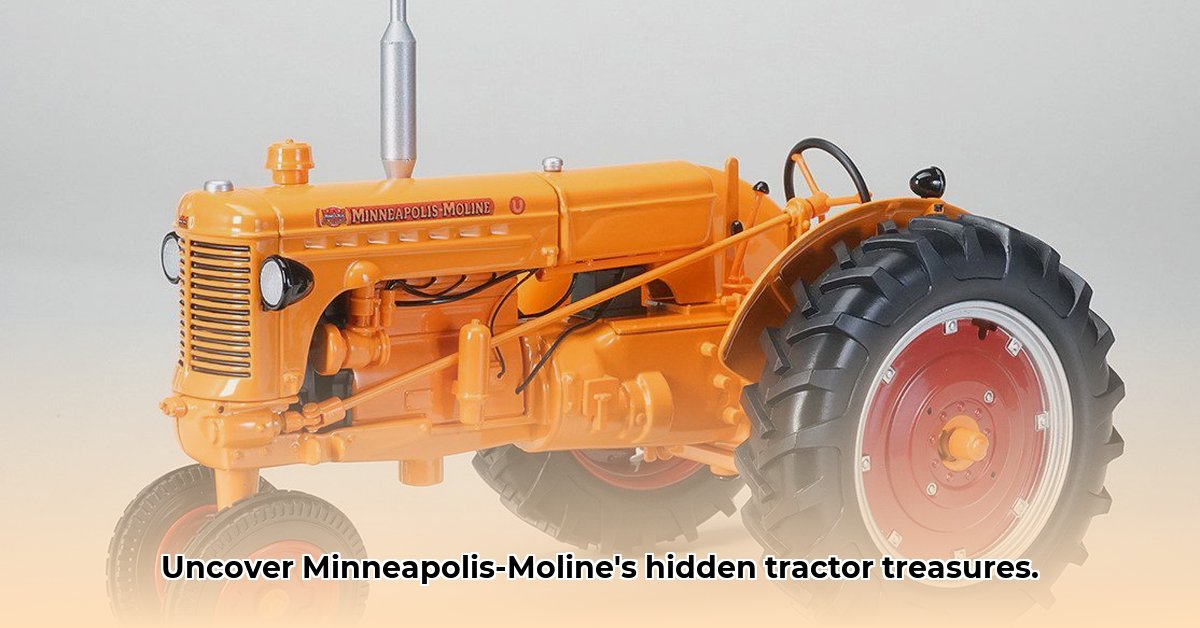
The story of Minneapolis-Moline (M-M) tractors isn't just a catalogue of models; it's a compelling narrative of innovation, growth, and ultimately, a fall from grace. This story reveals the complex interplay of engineering brilliance, strategic decisions, and the unpredictable nature of the agricultural machinery market. We'll explore their iconic designs, the factors contributing to their success and decline, and the lasting legacy they left behind. Did their focus on operator comfort ultimately become a liability? Let's delve into the details. For more on modern agricultural machinery, check out this resource.
The Rise of Minneapolis-Moline: A Merger of Giants
Born in 1929 amidst the Great Depression, Minneapolis-Moline emerged from the merger of several established agricultural machinery companies. This strategic move created an immediate powerhouse, poised to challenge the existing industry landscape. This bold gamble on the future of American farming proved initially successful. The resulting company immediately controlled a significant portion of the market, but this success masked the future challenges that awaited. How did they accomplish this initial market domination?
Early Innovations: Setting the Stage for Success
Minneapolis-Moline's early success wasn't accidental. They quickly established themselves by introducing innovations that resonated with farmers. Models like the Model D Universal, equipped with an electric starter—a rarity for the time—demonstrated their commitment to technological advancement. This focus on modernizing farm work gave them a competitive edge. This commitment to innovation laid the groundwork for creating farming giants.
The UDLX Comfortractor: Redefining Operator Experience
The late 1930s saw the launch of the revolutionary UDLX Comfortractor. This wasn’t just a tractor; it was a statement. Imagine the backbreaking labor of early 20th-century farming. Then picture a fully enclosed cab, shielding operators from the elements. The addition of a heater and even a radio was unheard of, transforming the operator's experience. The high-speed gearbox further increased efficiency. This wasn't just about selling more tractors; it was about dramatically improving the lives of farmers. This level of human-centered design was truly groundbreaking. What were the lasting repercussions of this groundbreaking design?
A Diverse Product Line: Catering to Varied Needs
Minneapolis-Moline recognized the diversity within the farming community. They offered a wide range of tractors, powered by both gasoline and diesel engines, with options for two-wheel and four-wheel drive. This approach, while initially broadening their appeal, might have inadvertently diluted their brand focus. The vast array of models, while designed to meet various needs, might have stretched their resources too thinly. Did this diversification strategy ultimately impede their long-term success?
The White Motors Acquisition: A Turning Point
The 1963 acquisition by White Motors marked a significant turning point. This loss of independence irrevocably altered the trajectory of Minneapolis-Moline. While the precise motivations behind White Motor's acquisition remain debated—strategic diversification, market share consolidation, or something else entirely—the outcome is undeniable. This event significantly impacted the subsequent trajectory of the company, laying the groundwork for the abandonment of the Minneapolis-Moline brand in 1974.
"The White Motors acquisition undeniably marked a shift in the company's leadership and strategic direction," says Dr. Amelia Hernandez, Professor of Agricultural History at the University of Wisconsin-Madison. "The integration of two distinct corporate cultures presented considerable challenges."
The Decline and Legacy of a Farming Icon
Several factors likely contributed to Minneapolis-Moline's eventual decline: heightened competition, increasingly demanding technological advancements, and perhaps the internal struggles resulting from the White Motors acquisition. However, the company's legacy persists. The UDLX Comfortractor remains a symbol of innovative design, and many of these vintage tractors are still cherished by collectors today.
Three Pivotal Points:
- The innovative design of the UDLX Comfortractor, while groundbreaking, was a high-cost solution.
- Intense competition from both domestic and international manufacturers significantly impacted market share.
- Internal challenges, including labor relations and financial instability, exacerbated their struggles.
The Enduring Appeal of Vintage Minneapolis-Moline Tractors
Even today, restored Minneapolis-Moline tractors command respect and admiration. Why? Because they represent a unique blend of rugged durability and innovative design. This enduring appeal speaks to the quality of their engineering and the powerful impact they had on the lives of farmers during a pivotal period in agricultural history. The legacy of Minneapolis-Moline continues to hold fascination for those interested in the history of American agriculture and vintage machinery. Is it possible that the company's pioneering spirit and commitment to innovation could pave the way for a revival of the brand? Only time will tell.